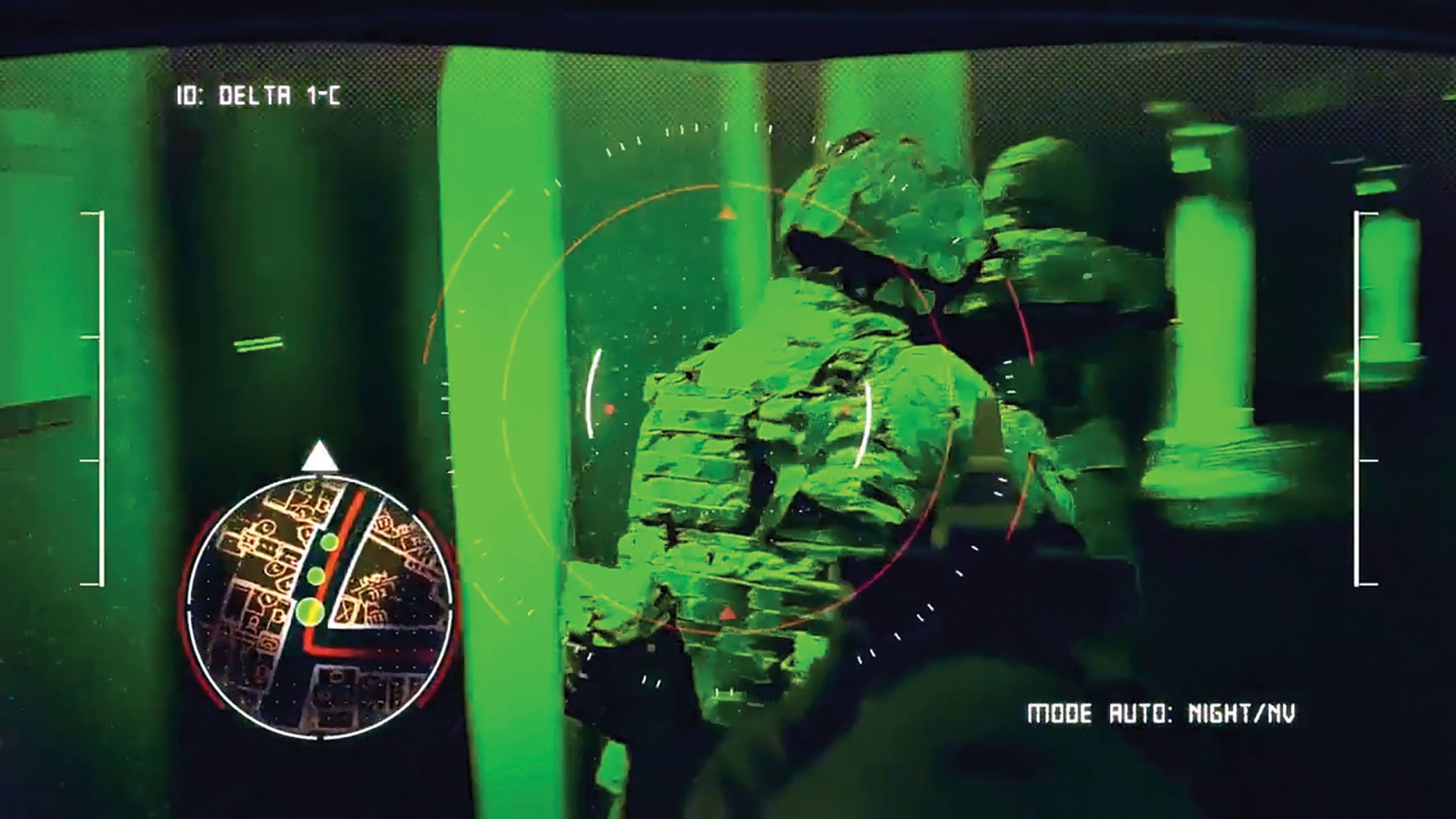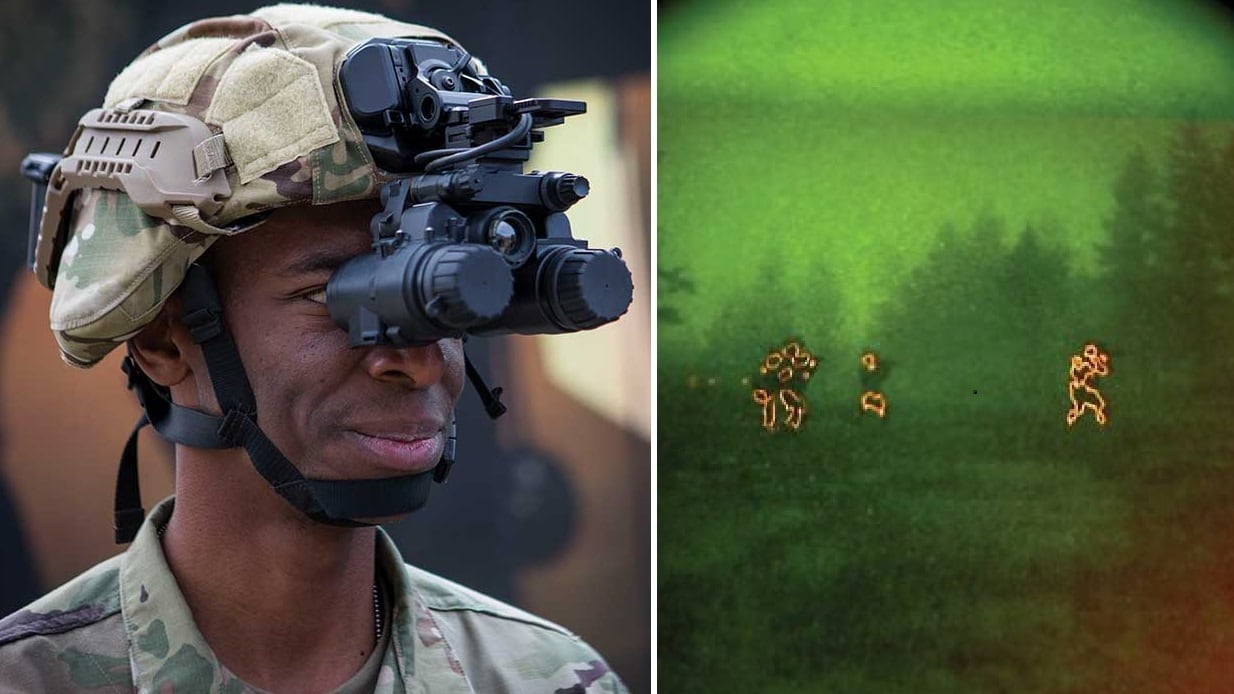The Army’s latest iteration of night vision, which adds binocular vision, shifts green glow to white and lets soldiers see their weapon sight in their device, will go to a unit this fall.
Army Times previously reported that a unit deploying to South Korea in October would carry the Enhanced Night Vision Goggle-Binocular. But a new release from Program Executive Office-Soldier lays out more details on the device and noted that it would field in September.
RELATED

The goggle recently completed a two-week limited user evaluation test by soldiers and Marines that led up to a 36-hour platoon situation training exercise, Patrick Ferraris with PEO Soldier wrote in the release.
An armored brigade combat team would deploy with the device, Lt. Gen. James Richardson said in Congressional testimony earlier this month.
“I have used the goggle. I have shot [with] the goggle. It is better than anything I’ve experienced in my Army career,” said Richardson, deputy commander of Army Futures Command.
Over the next two years, 10,000 soldiers and 3,100 Marines will receive the goggle.
The goggle is a product of PEO Soldier and work with the Soldier Lethality Cross Functional Team and Army Futures Command. It is the first such product to emerge from those two brand new entities.
“Throughout the past year and a half, Soldier and Marine feedback from these touchpoints provided several improvements to the ENVG-B system,” said Capt. Joshua Redmond, ENVG-B assistant product manager at PEO Soldier. “The Soldiers developed the system into what it is today and these goggles have overwhelming user acceptance.”
It has some distinct features:
- A dual-tubed binocular system for improved situational awareness and depth perception.
- Higher resolution, white phosphor tubes instead of the traditional green, providing better contrast.
- A fused thermal imager for better target recognition in degraded visual environments (dust, smoke, zero illumination, subterranean, etc.)
- Inclusion of augmented reality aspects from the Nett Warrior display.
- Wireless interconnectivity with the Family of Weapon Sight-Individual, displaying the weapon site reticule in the ENVG-B and allowing soldiers to accurately engage without shouldering the weapon.
The wireless connection gives soldiers an option to use Rapid Target Acquisition software, which basically means they can shoot from the hip, around corners and toggle from a weapons view or a “picture-in-picture” mode to see both what’s in front of them and where their weapon is pointing.
The next-level development will come from the Integrated Visual Augmentation System, a total package of augmented reality built on the Microsoft HoloLens device that couples the targeting along with navigation and situational awareness aspects of the existing Nett Warrior through the Andriod Tactical Assault Kit.
IVAS has been going through testing and soldier feedback in recent months and is expected to finish testing in the next 18-24 months.
It will eventually include eye-tracking, video recording and muzzle placement data for training feedback.
Todd South has written about crime, courts, government and the military for multiple publications since 2004 and was named a 2014 Pulitzer finalist for a co-written project on witness intimidation. Todd is a Marine veteran of the Iraq War.




